Ecuador’s Volcanic Wo
Thank you for reading this post, don't forget to subscribe!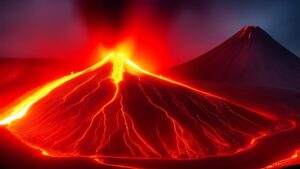
Introduction
Ecuador, a small but mighty country straddling the equator in South America, is home to some of the most breathtaking volcanic landscapes on Earth. Known as the “Avenue of the Volcanoes,” the central highlands of Ecuador boast more than 30 volcanoes — both active and dormant — forming a dramatic spine through the Andean range. Among these, Cotopaxi and Chimborazo stand as icons of nature’s power and beauty, drawing climbers, hikers, and nature lovers from around the globe.
This article explores the majesty of Ecuador’s volcanoes, how to experience them responsibly, and what lies beyond the famous peaks for those eager to explore more.
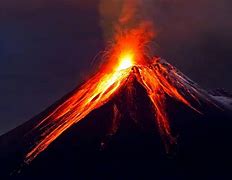
Cotopaxi: The Fiery Giant
At 5,897 meters (19,347 feet), Cotopaxi is one of the world’s highest active volcanoes — and arguably the most famous in Ecuador. Just 50 kilometers south of Quito, it’s part of the Cotopaxi National Park, which offers an otherworldly mix of high-altitude grasslands (páramo), icy glaciers, and lava-sculpted valleys.
Why visit Cotopaxi?
- Its perfectly symmetrical, snow-covered cone rises dramatically above the Andean plateau.
- It’s one of the most accessible high-altitude climbs in South America, making it a favorite among mountaineers.
- The park itself teems with wildlife such as wild horses, Andean foxes, and even the elusive Andean condor.
Activities at Cotopaxi
- Hiking & Trekking: Not everyone has to summit. The hike to the José Rivas Refuge at 4,800 m is a popular day trek offering stunning views of the glacier.
- Climbing: For the ambitious, summiting Cotopaxi is a challenging but achievable feat, typically requiring crampons, ice axes, and a guided overnight expedition.
- Mountain Biking: Adrenaline seekers can bike down the slopes of the volcano for a thrilling descent through lava fields and open plains.
Tips for visiting Cotopaxi
- Be sure to acclimatize; altitude sickness is common above 3,000 m.
- Dress in layers — weather changes quickly at high elevations.
- Hire a certified guide if attempting to summit.

Chimborazo: Touching the Closest Point to the Sun
While Chimborazo is often overshadowed by its more active sibling Cotopaxi, it holds a remarkable distinction: thanks to the equatorial bulge of the Earth, its summit is the furthest point from the Earth’s center and the closest point to the sun — even more so than Mount Everest!
At 6,263 meters (20,548 feet), Chimborazo is Ecuador’s highest peak and a dormant volcano.
Why visit Chimborazo?
- Its sheer size and towering glaciers dominate the skyline, inspiring awe and reverence.
- Less crowded than Cotopaxi, offering a more serene and wild experience.
- The surrounding Chimborazo Wildlife Reserve is home to wild vicuñas, relatives of llamas and alpacas, grazing against the snow-capped backdrop.
Activities at Chimborazo
- Hiking & Trekking: Many visitors hike to the Carrel Refuge at 4,850 m or up to the Whymper Hut at about 5,000 m, where the glacier begins.
- Climbing: Summiting Chimborazo is a serious mountaineering challenge, requiring excellent physical condition, technical skills, and a high tolerance for altitude.
- Wildlife Observation: Spot vicuñas and Andean condors while exploring the high plains.
Tips for visiting Chimborazo
- Even more than Cotopaxi, proper acclimatization is critical.
- The weather can be harsh, so be prepared for extreme cold and strong winds.
- The summit climb is best done with an experienced guide due to crevasses and changing conditions.
Disclosure
As an Amazon Associate, I earn from qualifying purchases. This website also contains other affiliate links, and we may earn a small commission if you make a purchase through them — at no extra cost to you. We only recommend products and services we trust and believe will enhance your outdoor adventures. Thank you for supporting our work!
South America Adventure Gear Guide here
Discover the best drones and essential accessories to capture breathtaking landscapes, wildlife, and adventures across South America perfect for beginners and pros alike!
50 Best Drone Gear & Accessories
Drone Use: Know Before You Fly
Drone regulations vary widely depending on the location. Some parks, natural areas, and landmarks prohibit drones to protect wildlife, visitors, and sensitive environments, while others may allow them with certain restrictions or permits. Always check local, state, and federal rules before flying, respect no-fly zones, and prioritize safety, privacy, and environmental care during your adventure.
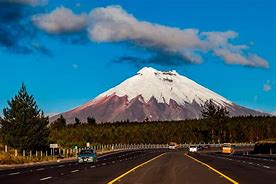
Beyond Cotopaxi & Chimborazo: Other Volcanic Gems
Ecuador’s volcanic wonderland extends far beyond its two most famous peaks. For travelers eager to venture off the beaten path, there are many more volcanoes worth exploring.
Tungurahua
- Known as “the Black Giant,” Tungurahua towers over the charming town of Baños de Agua Santa.
- Active and unpredictable, it has erupted several times in the past two decades.
- Baños offers hot springs, waterfalls, and adventure sports — a great base for observing the volcano.
Antisana
- At 5,704 m, Antisana is another icy giant, often cloaked in clouds.
- Its remote location makes it less visited, perfect for those seeking solitude.
- The surrounding Antisana Ecological Reserve is excellent for birdwatching, especially to spot condors.
Illinizas
- The twin peaks of Illiniza Norte (5,126 m) and Illiniza Sur (5,263 m) offer stunning climbs.
- Illiniza Norte is a popular acclimatization climb before tackling higher peaks.
- The hike to the refuge nestled between the two peaks is a rewarding day trip.
Quilotoa
- A different kind of volcanic experience, Quilotoa is a collapsed caldera filled with an emerald lake.
- Hike around the rim or descend to the water for kayaking and camping.
- The Quilotoa Loop, a multi-day trek through Andean villages, is a cultural and scenic delight.
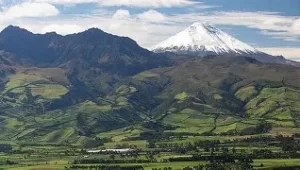
The Avenue of the Volcanoes
Coined by explorer Alexander von Humboldt, the Avenue of the Volcanoes is a 325-km stretch through Ecuador’s central highlands where snow-capped peaks rise dramatically above fertile valleys. Driving or hiking this route offers endless opportunities to see the full diversity of Ecuador’s volcanic landscapes.
Along the way, you’ll encounter colorful indigenous markets, colonial towns like Riobamba and Latacunga, and a tapestry of ecosystems — from cloud forests to windswept páramos.
When to Visit Ecuador’s Volcanoes
Ecuador’s climate is influenced by altitude more than seasons, but generally:
- June to September: Dry season — ideal for trekking and climbing.
- October to May: Wetter, but the mountains are still accessible, with greener scenery and fewer crowds.
Keep in mind that weather in the high Andes is unpredictable year-round, and snow or storms can occur at any time.
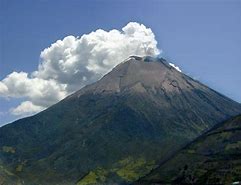
Safety & Responsible Travel
Exploring Ecuador’s volcanoes is rewarding but not without risks:
- Always acclimatize before attempting high elevations.
- Hire certified guides for climbs above 4,500 m.
- Stay on marked trails to protect fragile ecosystems.
- Pack out all trash and respect local wildlife.
Supporting local guides and communities helps preserve the unique cultural and natural heritage of these regions.
Conclusion
From the symmetrical snow cone of Cotopaxi to the sun-kissing summit of Chimborazo, Ecuador’s volcanic wonders inspire awe and adventure. Whether you’re a mountaineer chasing summits, a hiker looking for breathtaking trails, or a traveler eager to witness the sheer majesty of the Andes, Ecuador offers something unforgettable.
Step into the Avenue of the Volcanoes and discover not just the power of the Earth’s forces, but also the beauty, resilience, and culture of the people who call these highlands home.
So lace up your boots, take a deep breath of thin mountain air, and set your sights on the peaks — Ecuador’s volcanoes await you.

 Explore More Adventure Hubs:
Explore More Adventure Hubs:
Leave a Reply